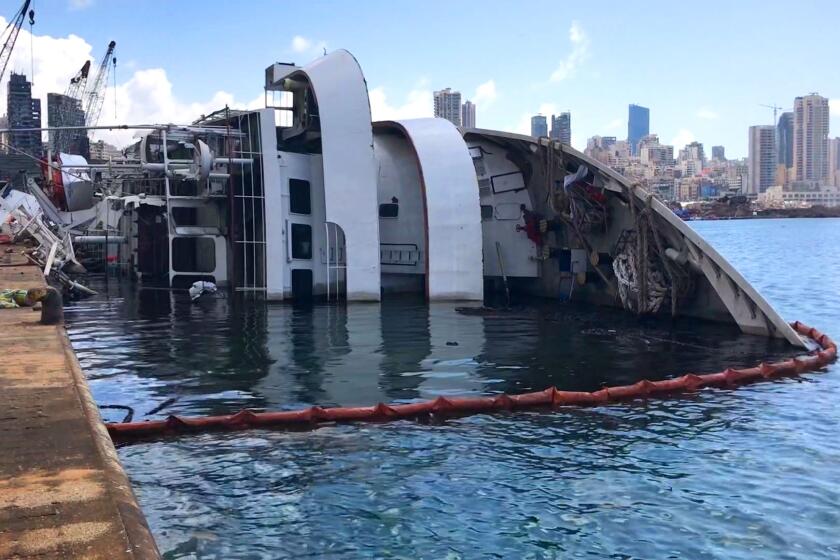‘There’s something strange’: Baffling questions, conspiracy theories grow after Beirut blast
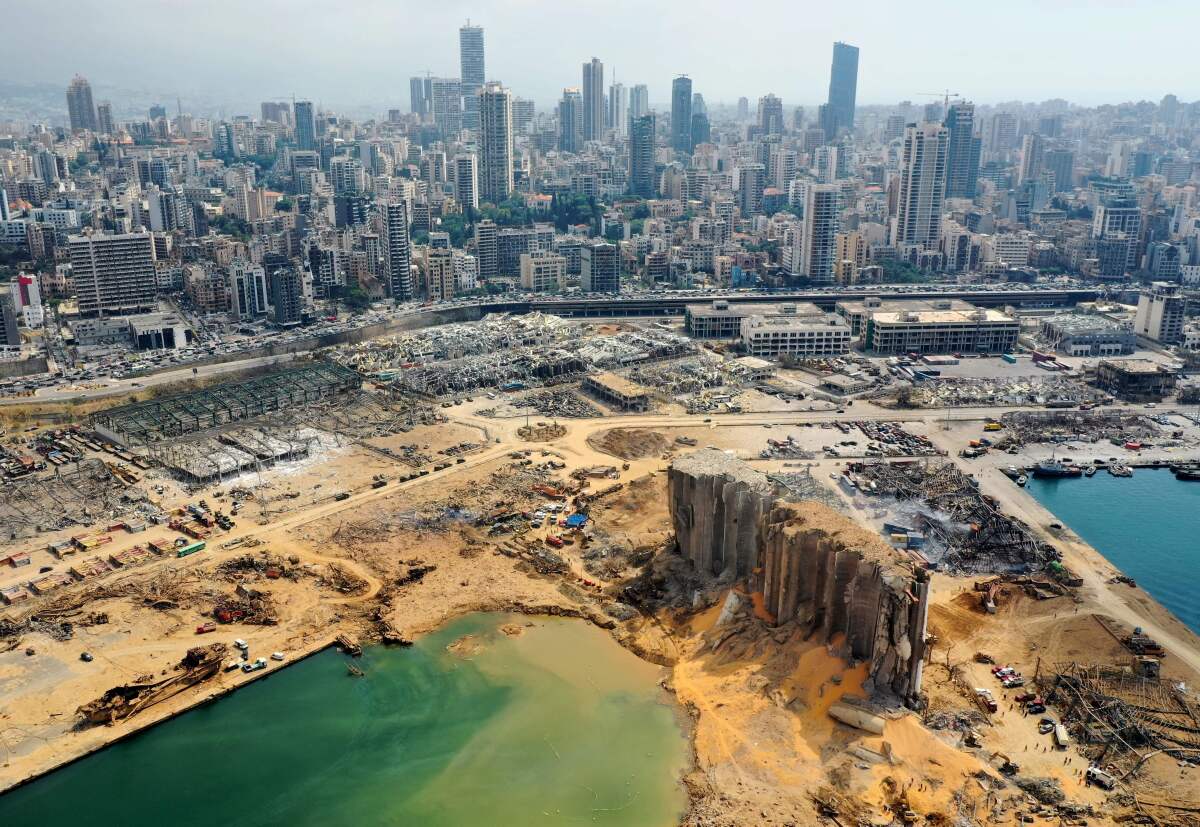
BEIRUT — It was a missile strike, one story goes, no doubt carried out by an American drone. No, it was the work of Israeli fighter jets, according to another tale, a strike in the shadow conflict between Israel and Iran. Others swear it was part of a nefarious plot to plunge Lebanon into yet another civil war.
Since a stockpile of more than 2,750 tons of ammonium nitrate blew up on the edge of Beirut this month, infuriated residents have been struggling to understand how the blast happened, and just what — or who — is to blame for the colossal explosion that leveled entire neighborhoods, killed at least 178 people and left thousands injured and homeless.
Many find the prevailing theory — that the blast was the accidental result of chronic mismanagement of Beirut’s port — unconvincing. Lebanese residents made cynical by years of government incompetence and corruption have no trouble believing in those as contributing factors. There are those in the country and beyond, however, who refuse to accept such an explanation, given Lebanon’s long history of intrigue, dirty dealings and manipulation by external forces.
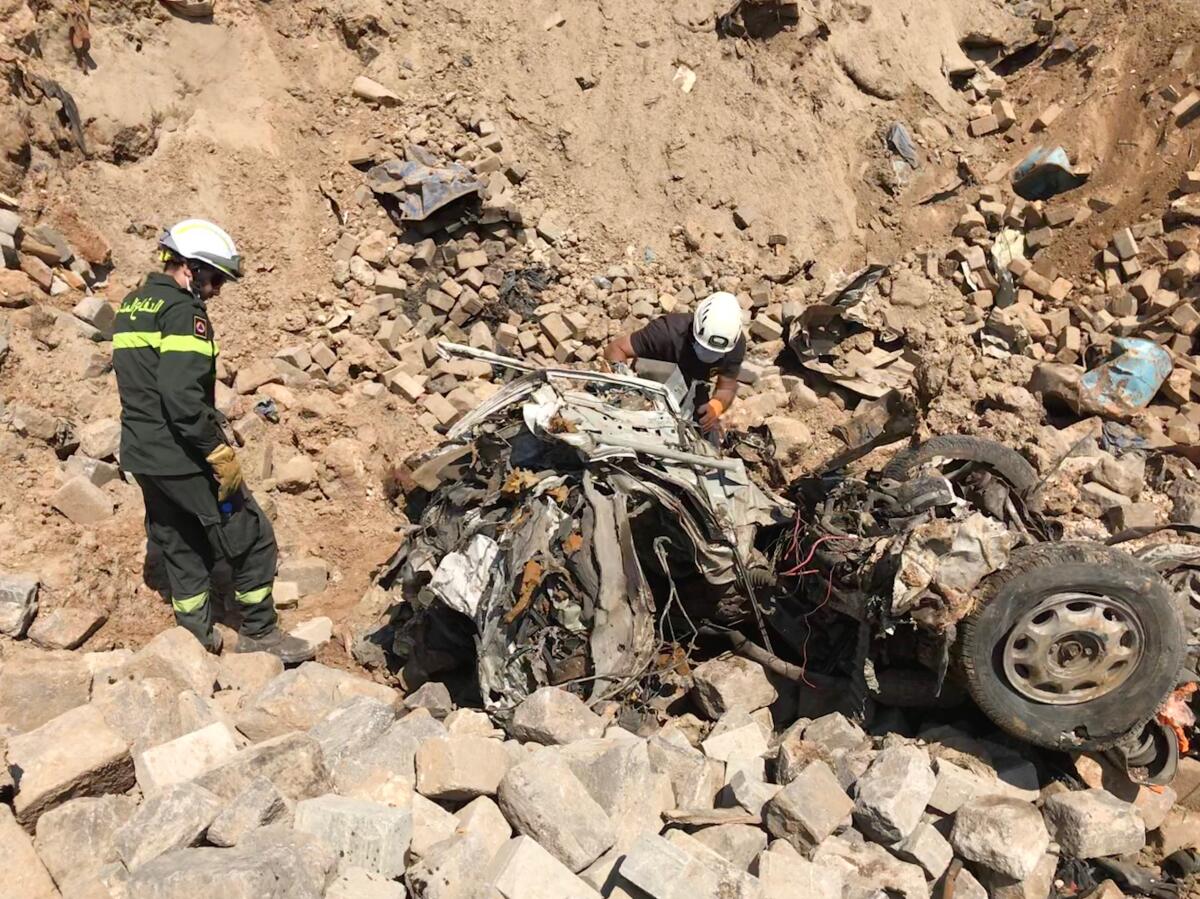
It is a matter of profound, and often justified, conviction that hardly anything happens here — whether it’s uncollected garbage, electricity blackouts, floods, food shortages or currency nosedives — that isn’t guided by a malevolent outside hand, often working through handsomely paid local proxies. It’s a vision of multiple, sinister puppet masters controlling events from behind a screen none can penetrate. The latest confirmation of that outlook came just last week when a United Nations-backed tribunal found a militant with Hezbollah, a group sponsored by Iran, guilty of conspiring in the assassination of former Lebanese Prime Minister Rafik Hariri outside a Beirut hotel in 2005.
“Because of the history of Lebanon and the geopolitical situation, the first place people go to is obviously the worst: the theory of third-state intervention, terrorism, along with all the parties involved in Lebanon’s politics,” said Fabien Tabarly, head of NIGMA Conseil, a Beirut-based security consulting and intelligence firm.
The Aug. 4 blast ranks as a particularly opaque event, one that wouldn’t be out of place in a John Le Carre novel.
Los Angeles Times reporter Nabih Bulos was less than 500 yards from the center of the massive explosion in Beirut. He lived to tell the tale
The story begins in late 2013 with a Russian-owned, Moldovan-flagged ship, the Rhosus, making an unscheduled stop in Beirut’s port. Its cargo included thousands of tons of high-density ammonium nitrate, a common fertilizer and explosive, to be delivered to an explosives company in Mozambique.
The ship was deemed unseaworthy and held by Lebanese authorities until it paid its berthing fees. But the ship’s owner abandoned it, and the cargo was transferred to a warehouse, parked near a cache of confiscated fireworks and left to languish for more than six years in a bureaucratic tangle, officials say.
Three weeks ago, a fire started at the port after what officials said was maintenance activity, though the exact cause has yet to be determined. The blaze spread to the ammonium nitrate stockpile and detonated it.
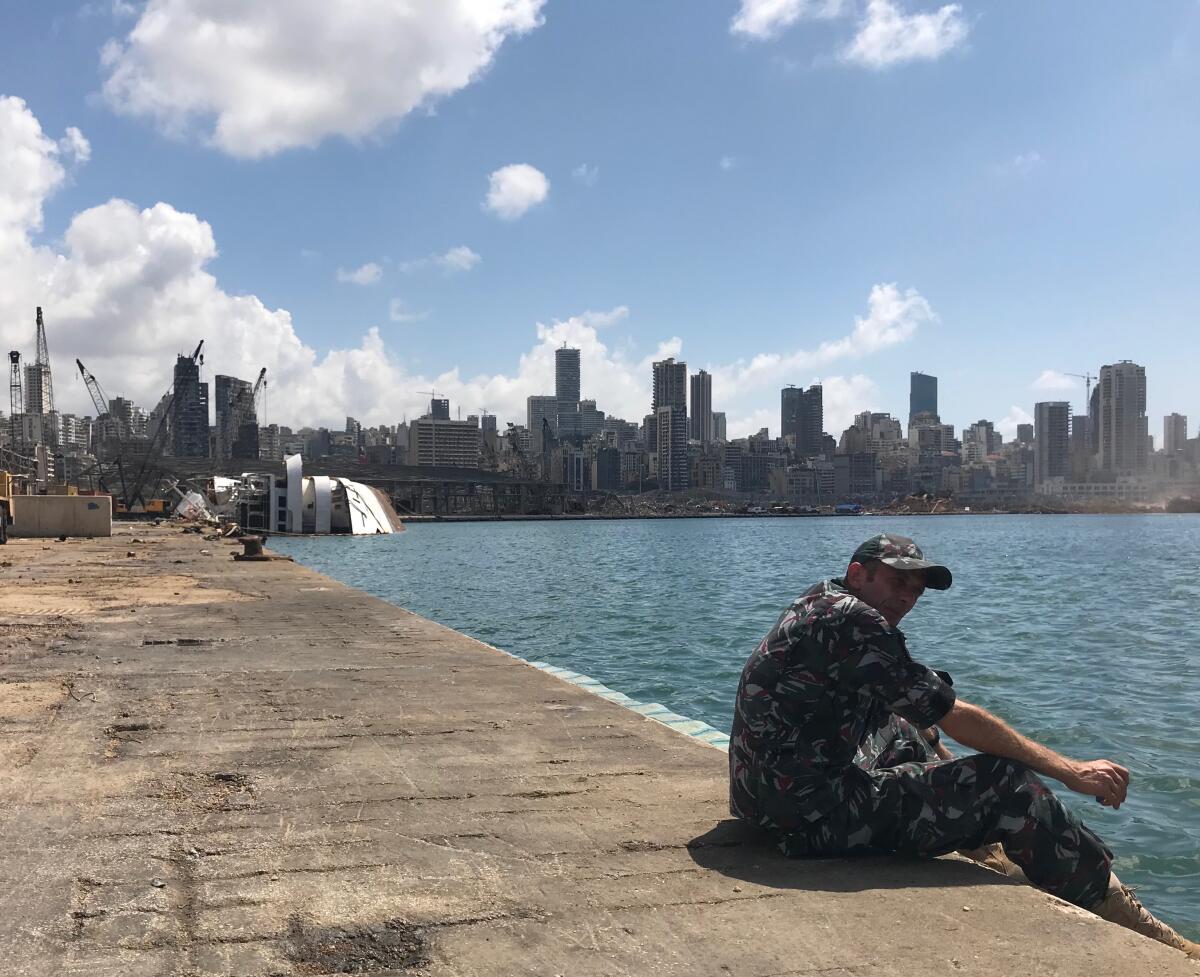
But conspiracy theorists such as those belonging to the so-called 9/11 truth movement soon contended there was more to this explosion than met the eye.
Gordon Duff, editor of Veterans Today, a website that bills itself as “serving the clandestine community” but which many dismiss as peddling fake news, claimed that the ammonium nitrate cache was part of a multi-year setup orchestrated by Israel to obscure its bombing of the port with a “tactical nuclear weapon.” A bevy of self-proclaimed experts pored over the color of the smoke, the mushroom cloud and the destruction wrought by the explosion and declared that it couldn’t have been caused by ammonium nitrate.
Videos — later shown to be doctored — emerged on social media depicting a missile striking the warehouse; one even claimed that an episode of “The Simpsons” had predicted the cataclysm.
Meanwhile, many Lebanese insisted that the blast was accompanied by sounds of fighter jets. They attributed their familiarity with the sound of jet engines to the 2006 war between Israel and Hezbollah, during which south Beirut was pounded by Israeli warplanes.
“No way this material can blow up in this way on its own. I believe it was a missile,” Jimmy Geagea, a coordinator at a Beirut-based seminary, said in an interview. “Look, no doubt there was government negligence. But at the same time, there’s something strange.”
Geagea acknowledged, however, that “these are all thoughts that come out of anger, because we’re so frustrated at what happened.”
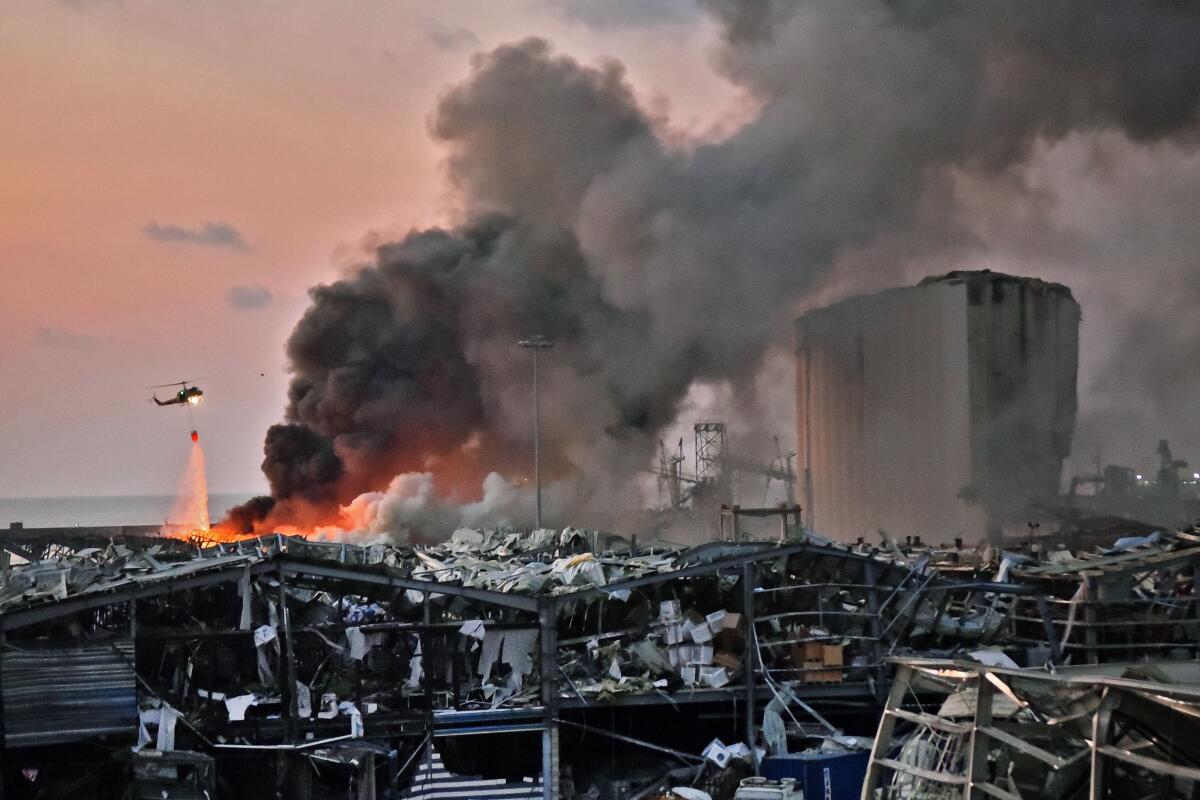
With 18 different religious communities vying for power in Lebanon’s notoriously fractious state, the assignment of blame for the tragedy is inevitably refracted through sectarian or party loyalties.
The port, one side insists, is under the thumb of Hezbollah, which Washington designates as a terrorist organization. According to this theory, the blast was triggered by a Hezbollah arms depot containing materiel to be used in neighboring Syria, where the group is bolstering the forces of Syrian President Bashar Assad against his rebel adversaries. In this telling, the blast was meant to discredit Hezbollah.
Others say the ammonium nitrate was destined for the rebels in Syria and was brought into Lebanon by Hezbollah’s enemies.
Still another theory sees the blast as a tool of demographic change, pointing to the fact that Christian-dominated neighborhoods in east Beirut were the hardest hit while other parts of the city were largely spared.
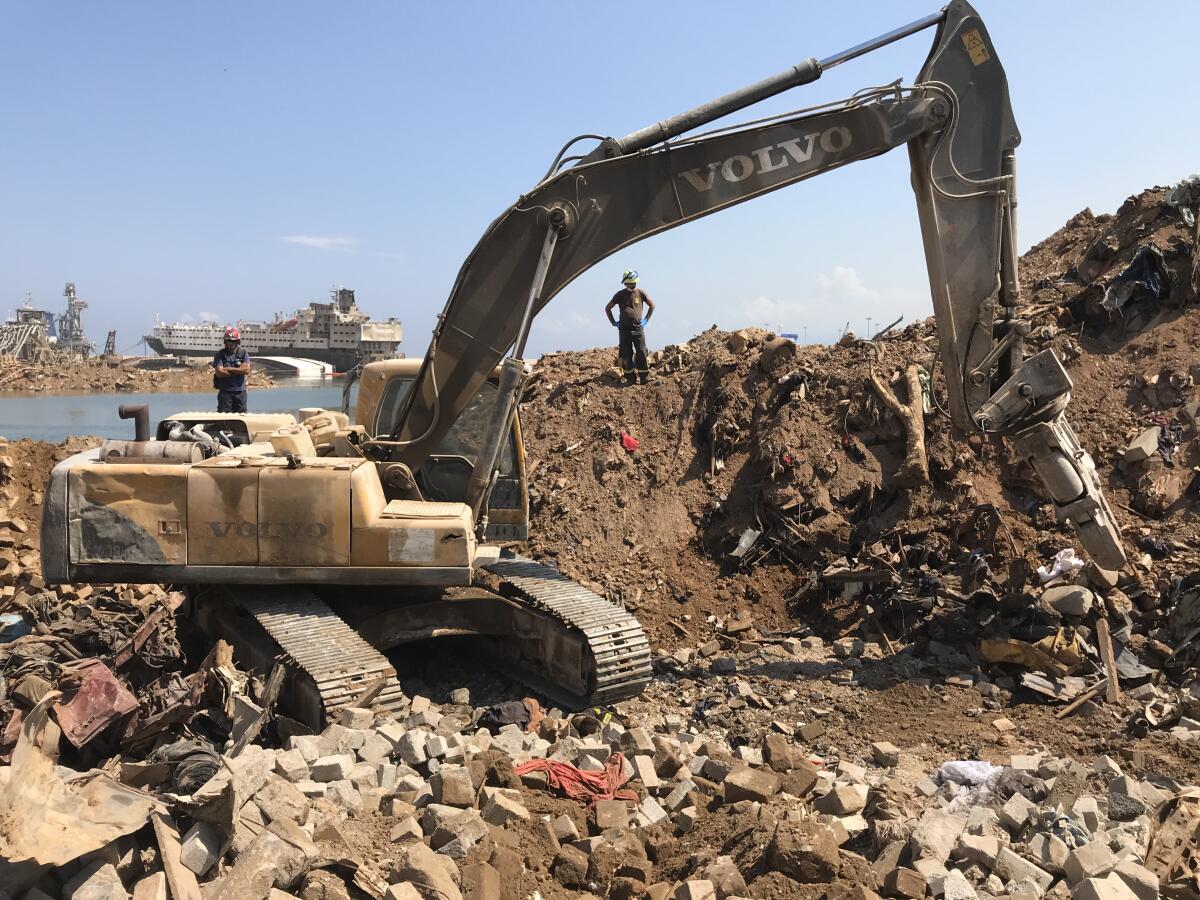
Lebanon’s leaders haven’t helped clarify matters. President Michel Aoun, a Hezbollah ally, told an Italian newspaper it was “impossible” that the port had a Hezbollah weapons cache — but promised all avenues would be explored. Immediately after the blast, Prime Minister Hassan Diab vowed there would be a swift investigation; weeks later, the inquiry is ongoing amid bickering over the involvement of international authorities.
Based on past experience, there’s little hope among the Lebanese for either a quick or transparent investigation. The inquiry into former premier Hariri’s assassination took 15 years, concluding last week with a judgment many saw as hopelessly watered down: Although one Hezbollah militant was convicted, three others were acquitted, and no blame was pinned on Hezbollah itself. The assassinations of figures involved in investigating Hariri’s killing haven’t even merited a thorough examination.
In many ways, stalled justice is the norm here, fostered in the aftermath of Lebanon’s 1975-90 civil war, which saw warlords become political leaders — they rule to this day — rather than be held accountable. The mantra among Lebanon’s myriad factions is “la ghaleb wa la maghloub”: No victor and no vanquished.
Two weeks after the Beirut blast, cleanup and investigative crews are still sifting through the rubble of leveled buildings and upended lives.
Meanwhile, legitimate questions around the Beirut blast linger, such as why the cargo remained in the port for six years despite warnings by various state officials of its danger.
By 2015, almost two-thirds of the stockpile was compromised, according to government communications reported by local media, with much of the ammonium nitrate strewn on the warehouse floor from ripped bags. A video shot in 2019 shows signs that the bags had been tampered with.
Two weeks before the explosion, the State Security apparatus warned the government that the ammonium nitrate was badly stored and poorly guarded. The warehouse had a hole in its wall, and one of its doors had been damaged. Were some of the contents stolen?
Some answers have come from local media, led by figures such as Riad Kobaissi, an investigative journalist who has worked on uncovering malfeasance in the port for almost a decade. A picture has emerged of gross negligence, with various officials playing bureaucratic tricks as they tried to find some way to benefit from the stockpile.
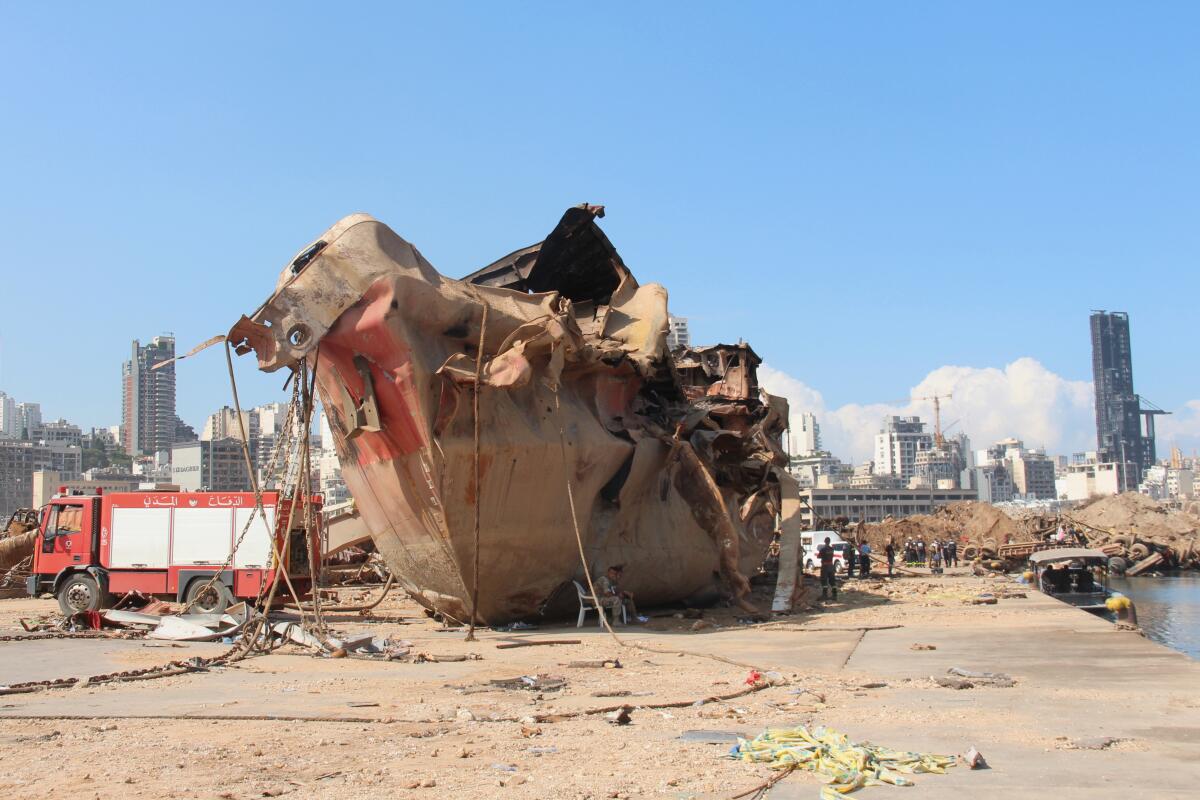
Kobaissi’s reporting has not uncovered evidence to support any of the more exotic theories about the explosion and its origins. Nor does he view it as the work of any one Lebanese faction; he notes that Hezbollah is only one of several groups with influence over the port. Instead, it appears to be the tragic result of a culture of corner-cutting by apparatchiks loyal to their party leaders rather than the country.
“It’s a metaphor, that corruption blew up in the face of the Lebanese,” Kobaissi said in an interview. “This is literally what happened, because this is the natural result when you have vital infrastructure being run by mafiosi.”
Times staff writer Patrick J. McDonnell in Mexico City contributed to this report.
More to Read
Sign up for Essential California
The most important California stories and recommendations in your inbox every morning.
You may occasionally receive promotional content from the Los Angeles Times.

